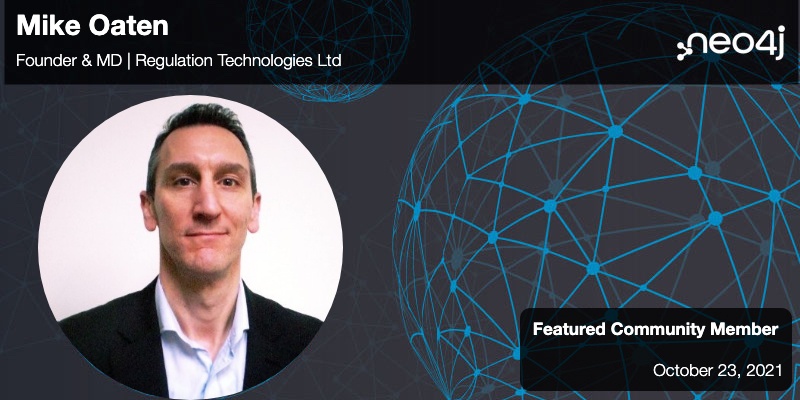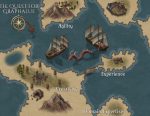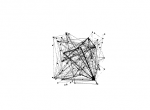This Week in Neo4j – Speaking Cypher, Stocks, Graphalue, Discover Aura, Wikidata, Gephi

DevOps Engineer, Neo4j
5 min read

Hello, everyone!
I guess it’s time to start looking for old costumes in the closet. I’m going to be looking for a new one this year, and I think “Squid Game” might have an impact on customers this season.
Anyway, this issue of Twin4j features Mike Oaten – an entrepreneur at Riskhunter – along with a new episode of Graphalue, and some practical resources on importing Wikidata into Neo4j.
Furthermore, you will find a super cool example of how to use the Cypher language to query the graph with your voice! Yes, you read that right. The guys over at Larus figured out how to make this happen. Check it out.
Also, an interview with Neo4j’s Nik Vora explains the value of graph databases in the context of fraud detection.
Have a great week everyone!
Max Andersson
Featured Community Member: Mike Oaten
This week’s featured community member is Mike Oaten.

Mike Oaten – This Week’s Featured Community Member
This week’s featured member is Mike Oaten, who is a part of our startup program at Neo4j. Mike is an entrepreneur working with his product Riskhunter, which uses graph technology to identify fraud and mis-selling of products in the UK financial services industry. Mike is a part of the Neo4j community and organizes the meetup group Bristol Graph Database Group, so check them out if you live in the Bristol area. Mike recently published a couple of his blog posts on the topic of graph technology and about how graph databases reflect reality and entity resolution.
Thank you for your contribution to the Neo4j community!
Speech to Cypher

Have you ever felt too tired to enter a Cypher query by typing it out? An Engineer from Larus thought that converting speech to Cypher would be a cool solution, and I agree. By defining a new Grammar to express Cypher queries in English words, Valerio managed to express his queries by sound input and then outputted the result to the screen. Check out how he does it in his blog post.
Diversify Your Stock Portfolio with Graph Analytics

Although the author is not a financial advisor and you should probably do your own research before investing, the power of graph databases can be illustrated in this blog post.
Using a subset of Kaggle’s NASDAQ-100 Stock Price dataset, the author can infer a similarity network between stocks. This technique could reduce risk by diversifying investments, and potentially increase profits. The author uses the Pearson similarity as the correlation metric in action to gain insights into the underlying data.
Graphalue: The Map to Graph Value (Part 2)

Neo4j’s Graph Innovation Lab helps clients find and optimize the graph value of their product or company. Creativity plays a critical role during this process and is incredibly important to foster in the right environment. Brainstorming could very well be one of the oldest tricks in the book for unleashing creative processes. Split the brainstorming into different explicit phases, where you first create ideas, then document these ideas, and only at a later stage – when all ideas have been freely surfaced – proceed to the prioritization phase. The best suggestions will come floating up above – and will make our quest so much easier. Learn more by listening to the podcast.
Discover Aura Free: Week 11

Aura Free is the new gem in the graph database ecosystem, and offers a novel way to build and maintain your graph database. In this stream, Michael and Alex will share their experiences with Aura Free and show you how they managed to build a graph database populated with a lot of data from Kickstarter projects and how to extract some neat graph insights from it.
Read the Article
Watch the Stream
Fintech and Fraud Detection

In 2020, financial institutions in the Asia Pacific and globally racked up more than $10.6 billion in penalties. Criminals are getting more sophisticated, developing novel new ways to elude discovery, acting either alone or as networks. A fraudster might create “new” synthetic identities – by stealing information from several people and mixing their social security numbers, addresses, phone numbers, and email addresses – later using those identities to open bank accounts, credit card accounts, or take out loans. Nik Vora, Vice President – APAC at Neo4j, explains how graph technology unearths data and connections to lead investigators to curb money laundering.
Import RDF Data from Wikidata

Now, you might be wondering how to get your Wikidata into Neo4j. The answer is simple: Watch Clair’s video of how to quickly get started or read the blog post by Grant.
Clair shows you how to import RDF data from Wikidata into Neo4j. Then she explores how you can create your own blank perspective in Bloom to explore the data. Watch the video to learn more.
Alternatively, Grant shows us how you can explore prog rock music with the help of a Neo4j database. He also demonstrates how to use the Neo4j Cypher query language to query the database. Read the blog post to learn more.
Watch the Video by Clair
Read the Article by Grant
Neo4j & Gephi Tool

Neo4j is the only enterprise-strength graph database that combines native graph storage, scalable architecture optimized for speed, and ACID compliance to ensure the predictability of relationship-based queries. Gephi is a tool that allows you to use data visualization in graphical form. In this article, you will see how to use Gephi to visualize the data and get started with Neo4j.
Tweet of the Week
My favorite Tweet this week was by @DaviesJeremy:
Finished a Search engine for “Lifestyle Medicine” for friend whom is looking for #seedfunding #startup #investors / #awesome combination of @webflow @neo4j @spacy_io & #golang (data originates from Webflow CMS/augmented using Neo4J/NLP/Golang?for search) https://t.co/Z891YzM9FL pic.twitter.com/mGQa9NZalL
— Jeremy Davies (@DaviesJeremy) October 16, 2021
Don’t forget to RT if you liked it too!








